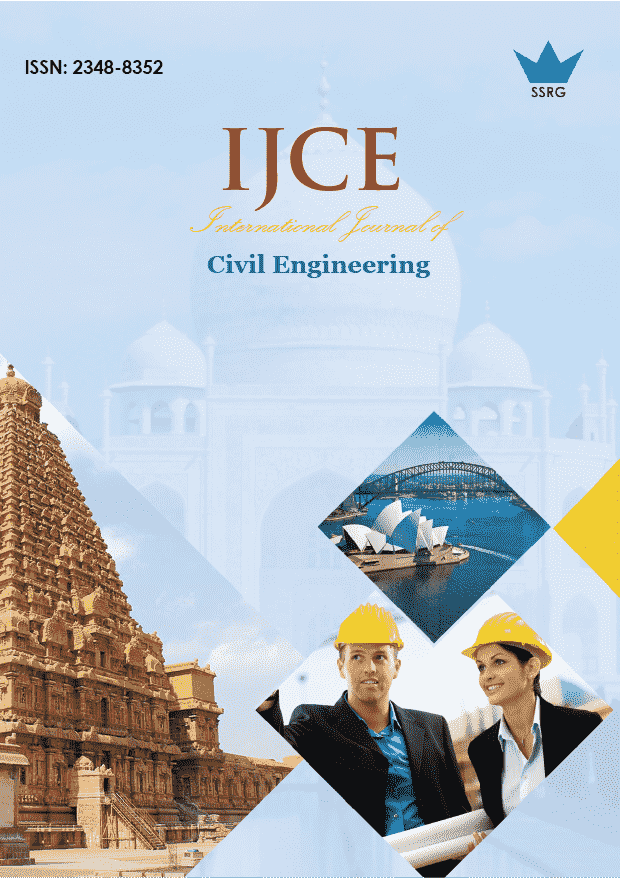Use of Defuzzification Methods for a Dry Cement Rotary Kiln

| International Journal of Civil Engineering |
| © 2025 by SSRG - IJCE Journal |
| Volume 12 Issue 8 |
| Year of Publication : 2025 |
| Authors : Brayham Smit Tunco Quispe, Luciano Gabriel Cuayla Flores, German Alberto Echaiz Espinoza, Pedro Alberto Mamani Apaza, Fernando Echaiz Espinoza |
How to Cite?
Brayham Smit Tunco Quispe, Luciano Gabriel Cuayla Flores, German Alberto Echaiz Espinoza, Pedro Alberto Mamani Apaza, Fernando Echaiz Espinoza, "Use of Defuzzification Methods for a Dry Cement Rotary Kiln," SSRG International Journal of Civil Engineering, vol. 12, no. 8, pp. 32-49, 2025. Crossref, https://doi.org/10.14445/23488352/IJCE-V12I8P103
Abstract:
Controlling nonlinear thermal systems like rotary cement kilns is a long-standing problem in industrial automation since they are dynamic and hard to predict. Fuzzy Logic Controllers (FLCs) present a strong alternative; nonetheless, the essential defuzzification phase - responsible for transforming fuzzy outputs into actionable values - has been inadequately examined in comparative analyses. This project creates a Mamdani-type FLC with 88 rules based on experts and four main inputs: combustion temperature, furnace torque, CO percentage, and preheater temperature. It will be used to control a high-capacity rotary kiln. We comprehensively examine five defuzzification methods: centroid, bisector, Smallest of Maximum (SOM), Middle of Maximum (MOM), and Largest of Maximum (LOM), using simulations generated in MATLAB’s Fuzzy Logic Toolbox. The results reveal that the output is generally consistent among approaches, except for the kiln feed rate, which is quite sensitive. The research illustrates that the selection of defuzzification strategy significantly influences control performance, with maxima-based approaches providing enhanced stability. These results provide practical advice for developing strong fuzzy controllers for complicated industrial processes.
Keywords:
Defuzzification techniques, Fuzzy Logic Controller, Mamdani inference, Nonlinear process control, Rotary kiln automation.
References:
[1] José Luis Castillo Tirado, Manuel Alejandro Ospina Alarcón, and Paula Andrea Ortiz Valencia, “Rotary Cement Kiln: A Review of Expert Systems Control,” TecnoLógicas, vol. 25, no. 55, pp. 1-27, 2022.
[CrossRef] [Google Scholar] [Publisher Link]
[2] Rasoul Fatahi et al., “Modeling Operational Cement Rotary Kiln Variables with Explainable Artificial Intelligence Methods – A “Conscious Lab” Development,” Particulate Science and Technology, vol. 41, no. 5, pp. 715-724, 2023.
[CrossRef] [Google Scholar] [Publisher Link]
[3] L.P. Holmblad, and J.-J Østergaard, “The FLS Application of Fuzzy Logic,” Fuzzy Sets and Systems, vol. 70, no. 2-3, pp. 135-146, 1995.
[CrossRef] [Google Scholar] [Publisher Link]
[4] Lauritz P. Holmblad, and Jens-Jørgen Østergaard, “Control of a Cement Kiln by Fuzzy Logic,” Readings in Fuzzy Sets for Intelligent Systems, pp. 337-347, 1993.
[CrossRef] [Google Scholar] [Publisher Link]
[5] Lilian. O. Iheukwumere-Esotu, and Akilu Yunusa-Kaltungo, “Knowledge Criticality Assessment and Codification Framework for Major Maintenance Activities: A Case Study of Cement Rotary Kiln Plant,” Sustainability, vol. 13, no. 9, pp. 1-21, 2021.
[CrossRef] [Google Scholar] [Publisher Link]
[6] Dharmendra Kumar, J.P. Tripathi, and R.K. Shukla, “The Role of Fuzzification and Defuzzification in Traffic Light Controller,” International Research Journal of Mathematics, Engineering and IT, vol. 7, no. 12, pp. 19-27, 2020.
[Publisher Link]
[7] Edwell Mharakurwa, “Valuation of % Metallization and % Accretion Formation in a Rotary Kiln of Sponge Iron Process Based on Fuzzy Logic Inference System,” Journal of Sustainable Research In Engineering, vol. 7, no. 1, pp. 46-57, 2022.
[Google Scholar] [Publisher Link]
[8] N. Moradkhani, and M. Teshnehlab, “Identification of Cement Rotary Kiln Using Type 2 Takagi-Sugeno Neuro-Fuzzy System Considering the Effect of Different Noisy Condition,” Iranian Journal of Fuzzy Systems, vol. 20, no. 5, pp. 33-45, 2023.
[CrossRef] [Google Scholar] [Publisher Link]
[9] M. Tayel, M.R.M. Rizk, and H.A. Hagras, “A Fuzzy Logic Controller for a Dry Rotary Cement Kiln,” Proceedings of 6th International Fuzzy Systems Conference, Barcelona, Spain, vol. 3, pp. 1525-1531, 1997.
[CrossRef] [Google Scholar] [Publisher Link]
[10] Samuel Diciembre Sanahuja et al., “Fuzzy Logic Control Systems: Mamdani and Takagi-Sugeno-Kang (TSK) Methods,” Universitat Jaume I, pp. 1-73, 2017.
[Google Scholar] [Publisher Link]
[11] Zdenko Kovacic, and Stjepan Bogdan, Fuzzy Controller Design: Theory and Applications, 1st ed., CRC Press, pp. 1-416, 2018.
[CrossRef] [Google Scholar] [Publisher Link]
[12] L.A. Zadeh, “Fuzzy Sets,” Information and Control, vol. 8, no. 3, pp. 338-353, 1965.
[CrossRef] [Google Scholar] [Publisher Link]

 10.14445/23488352/IJCE-V12I8P103
10.14445/23488352/IJCE-V12I8P103